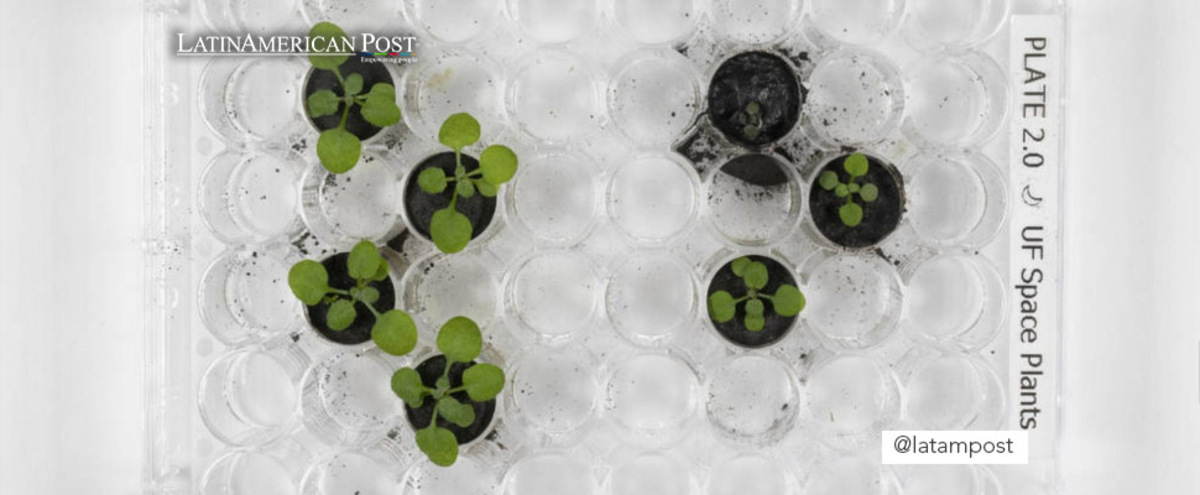For the First Time, Scientists Grow Plants On Lunar Soil
Scientists at the University of Florida discovered that plants can be grown on lunar soil. An important breakthrough for moon and space exploration.

Photo: University of Florida, Institute of Food and Agricultural Sciences / photo by Tyler Jones
LatinAmerican Post | Brandon Martínez Salazar
Listen to this article
Leer en español: Por primera vez, científicos cultivan plantas en suelo lunar
Fifty years have passed since the first human being landed on the moon. That event was a historical fact that marked a before and after in man's capacity to develop great explorations at a scientific level. Back then, Apollo astronauts collected samples of the lunar surface called regolith, in order to bring it back to Earth for future research at NASA.
This is how the scientific community celebrates a new breakthrough, since it was possible to demonstrate that it is possible to grow plants on lunar soil, which was characterized by being poor in nutrients. However, this research opens a door that will help humans survive long-term missions in outer space and their exploration of the moon. It should be noted that this project is part of NASA's Apollo Next Generation Sample Analysis Program.
We suggest you read: Colombia Will Have The Largest Seed Bank In The World
What was the study about and what were the results?
According to an article published on May 12 in the journal Communications Biology, the communicating author of the research, Robert Ferl, explained that this discovery is the result of studies that have been carried out since the space age in the Apollo laboratories. and that will bring great benefits to humanity. "First we asked the question of whether plants can grow in regolith. And second, how could that day help humans to have a prolonged stay on the Moon? Ferl told the magazine.
In the project, the researchers took three samples of regolith (lunar soil material) from the Apollo 11, 12, and 17 missions and planted a species of plant known as Arabidopsis thaliana, which is very hardy and managed to grow successfully in the experiment.
During the process, only one gram of regolith was used in each container, then water was added and then the seeds, which received a nutrient solution daily. This resulted in evidence of stress patterns in plants and the ability of this species to grow in hostile environments.
"This seminal research on plant growth is also a key example of how NASA is working to unlock agricultural innovations that could help us understand how plants might overcome stressful conditions in food-scarce areas here on Earth," NASA administrator Bill Nelson told the agency's website.
What will the future of the moon be like with this breakthrough?
For the scientific community, what will happen to the earth if climate change is not controlled is a reality. For this reason, for many years one of the most important dreams of man has been to conquer space and develop life on other worlds.
Through the Artemis project, NASA is planning to return to the moon to make a lasting presence. This means that humans will no longer have to worry about sending food from the ground to these types of missions, but there will be the possibility that the participants can produce it on the spot.
Another result that leaves great expectations in this discovery is the resistance to hostile environments . Which takes for granted a big step to continue studying the adaptability of plants to unknown materials or extreme weather events.




